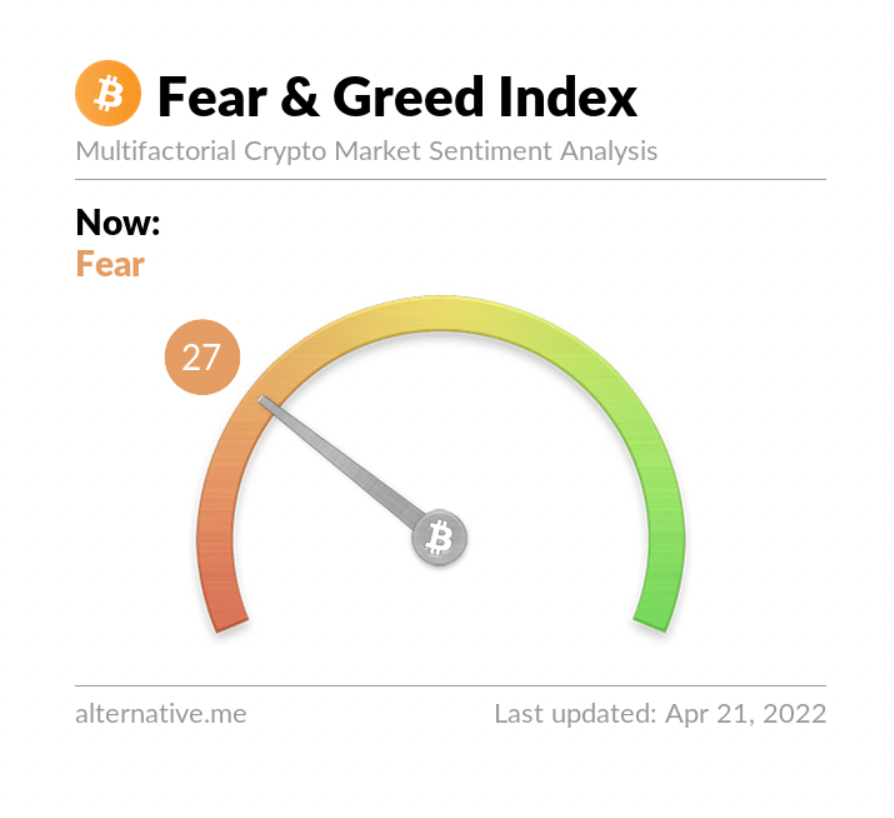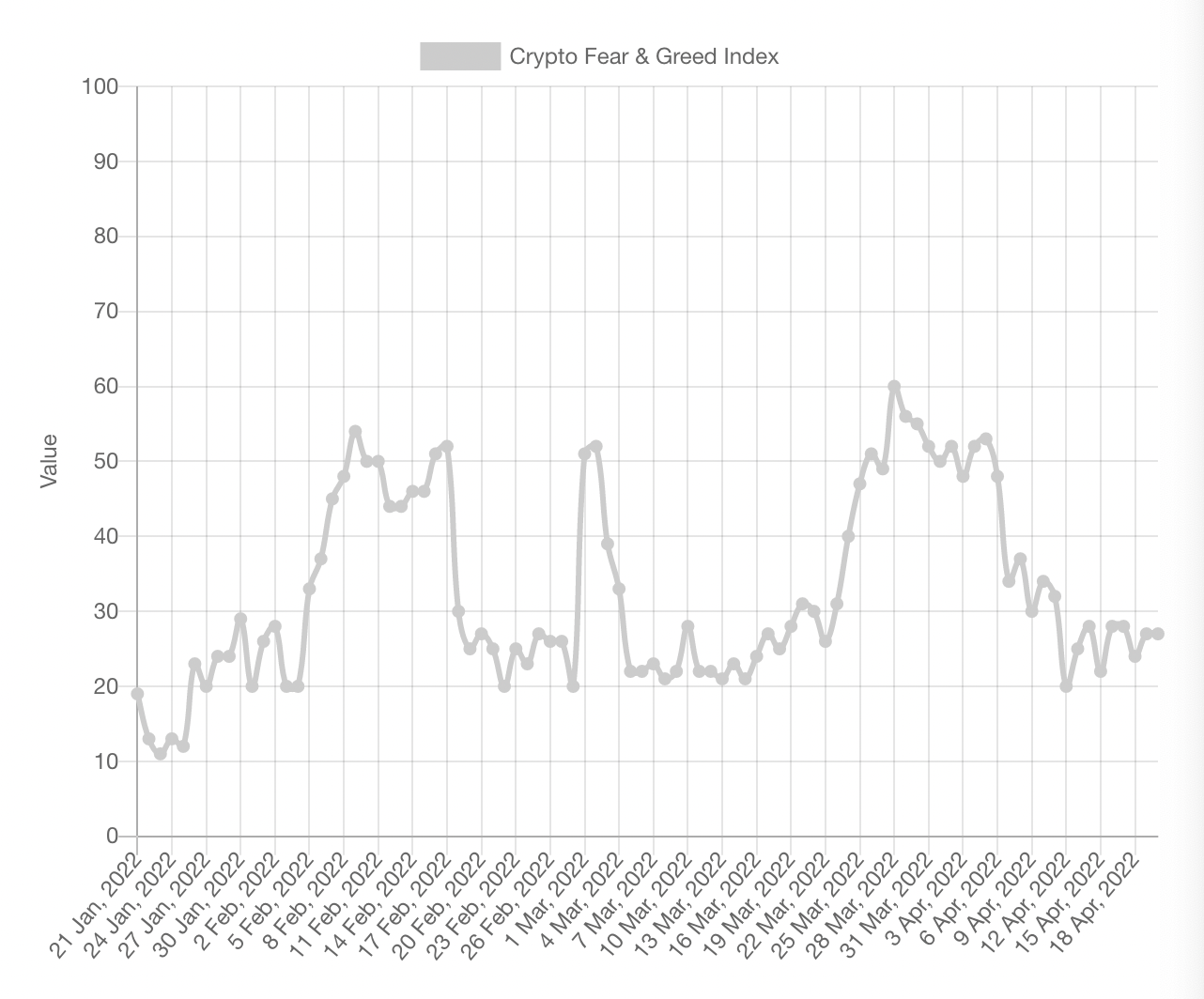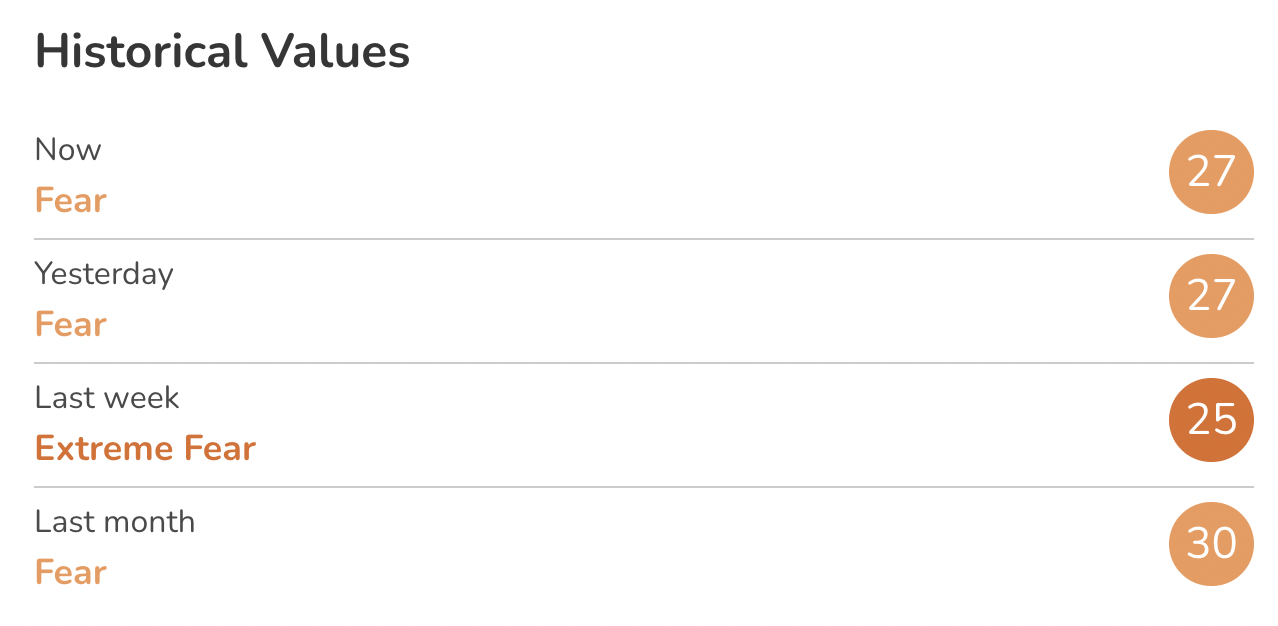The world of cryptocurrencies is known for its incredible volatility. Prices can skyrocket one day and plunge the next, leaving investors perplexed and anxious. To make informed decisions in this high-stakes environment, traders often rely on a valuable tool known as the Crypto Fear and Greed Index. In this article, we’ll take an in-depth look at this index, how it functions, and explore strategies to safeguard your investments from the wild swings that are synonymous with the crypto market.
Understanding the Crypto Fear and Greed Index
The Crypto Fear and Greed Index is an essential metric for anyone navigating the turbulent waters of cryptocurrency investments. It acts as a mirror reflecting the collective emotions and sentiments of the market’s participants. Understanding how this index operates can provide you with a significant advantage. It operates on two fundamental premises:
1. Extreme Fear

When the index registers an “Extreme Fear” reading, it’s an indication that the majority of investors are gripped by anxiety and fear. This can be seen as a contrarian indicator, suggesting that the market may have oversold, and a buying opportunity may be on the horizon for astute investors who believe that the current pessimism is unjustified.
2. Extreme Greed

Conversely, when the index soars into the “Extreme Greed” territory, it’s a sign that investors are driven by FOMO, or Fear of Missing Out. This exuberance can be a warning sign, as it often precedes market corrections. At this point, it’s wise to exercise caution, as excessive optimism may lead to irrational investment decisions.
Tracking the Index
Now, let’s delve deeper into how the Crypto Fear and Greed Index is tracked and what its readings mean. The index operates on a scale from 0 to 100, with 0 representing “Extreme Fear” and 100 indicating “Extreme Greed.” This scale reflects the emotional rollercoaster that is the crypto market.

As you can see from the chart, the index’s value fluctuates over time, offering a real-time glimpse into the collective psyche of crypto investors. These fluctuations can be instrumental in making timely investment decisions.
Volatility and Recent Trends
To truly appreciate the significance of the Crypto Fear and Greed Index, it’s essential to consider recent market events and their impact. The cryptocurrency market is known for its wild price swings and surges in trading volume.
For example, in May 2021, the market experienced an unprecedented surge in trading volume, exceeding a staggering 500 billion USD within a 24-hour period. This surge followed weeks of uncertainty, particularly surrounding meme coins like Dogecoin.
However, this period of optimism was short-lived. China’s decision to ban cryptocurrency services sent shockwaves through the market, resulting in a decline in the overall market capitalization. These events signaled that many investors were rushing to sell their holdings, a worrying development for a market valued at over 3 trillion USD.

The Current State of Crypto Fear
As we move into 2022, cryptocurrencies like Bitcoin and Ether, both major players in the market, reached highs not seen since January. However, this bullish momentum seems to have stalled, with the total crypto market capitalization dropping below 2 trillion USD. Bitcoin, in particular, struggled to maintain support at the 40k USD mark.
This shift in market dynamics coincided with a drop in the Crypto Fear and Greed Index. It slipped into the “extreme fear” range, indicating heightened apprehension among investors.
Expert Opinions
The crypto market is a realm where expert opinions often diverge widely, and understanding these perspectives can be crucial for investors.
For instance, Arthur Hayes, co-founder of BitMEX, predicts a potential drop in Bitcoin’s price to 30k USD by June, with Ether following suit at 2,500 USD. Hayes cites the close correlation between cryptocurrencies and tech stocks, which have been impacted by the Federal Reserve’s plan to raise interest rates.
On the flip side, some, like Antoni Trenchev, CEO of Nexo, remain optimistic, foreseeing Bitcoin reaching 100k USD within the next year. Another bullish voice comes from Cathie Wood, CEO of ARK Investment, who envisions Bitcoin reaching an astounding 1 million USD between 2026 and 2030.
Correlation with Tech Stocks
Understanding the relationship between cryptocurrencies and traditional assets, particularly tech stocks, is crucial for investors looking to diversify their portfolios.
The crypto market has shown a strong correlation with tech stocks, and many tech stocks have seen significant declines from their previous highs. This challenges the conventional wisdom that cryptocurrencies can act as a hedge against losses in other investments.
However, it’s essential to note that certain cryptocurrencies, such as Bitcoin, have emerged as relatively safer options. Bitcoin, currently ranking as the world’s ninth-largest asset by market capitalization, offers some level of protection that is absent from more speculative cryptocurrencies.
Protecting Against Wild Swings
One of the central challenges in the crypto market is mitigating the impact of wild price swings. Investors have explored various strategies to achieve this goal.
One approach involves the use of stablecoins linked to the US dollar. These stablecoins aim to provide stability in a portfolio by maintaining a one-to-one peg with the US dollar. However, traditional stablecoins often rely on centralized entities, making them vulnerable to economic downturns and regulatory actions.
Enter Terra’s UST stablecoin, a revolutionary approach to stability. UST employs algorithmic mechanisms to maintain its peg to the US dollar. It seeks to reduce risks associated with regulatory and financial censorship.
However, critics argue that even algorithmic stablecoins like UST are not immune to market confidence. The stability of such coins depends on the value of their underlying assets. If the value of these assets declines, so does the stability of the stablecoin.
The Role of Bitcoin
In recent times, the Luna Foundation Guard, responsible for Terra’s stability, has announced plans to bolster its reserves by purchasing Bitcoin and Avalanche tokens. This strategy aims to underpin the UST stablecoin and enhance its decentralization. This move suggests that Bitcoin’s dominance in the cryptocurrency market could continue to grow, especially in times of economic uncertainty.
Conclusion
In conclusion, the Crypto Fear and Greed Index is a powerful tool for navigating the complex and emotionally charged world of cryptocurrency investments. While opinions on the market’s future vary widely, one thing remains clear: understanding the correlation between cryptocurrencies and traditional assets is essential.
To protect your investments from wild price swings, consider innovative stablecoins like UST and recognize Bitcoin’s role as a beacon of stability in the crypto sphere. Staying informed, exercising caution, and adapting to the ever-evolving crypto landscape are key to successful cryptocurrency investing.
FAQs
1. What is the Crypto Fear and Greed Index? The Crypto Fear and Greed Index is a metric that measures the sentiments and emotions of cryptocurrency investors. It helps gauge whether the market is gripped by fear or greed, offering valuable insights for traders.
2. How can I use the Crypto Fear and Greed Index in my cryptocurrency investments? When the index is in the “Extreme Fear” zone, it may present buying opportunities, while the “Extreme Greed” zone might signal a need for caution and potential market correction.
3. What are the recent trends in cryptocurrency market sentiment? Recent trends have shown increased fear in the market, with the Crypto Fear and Greed Index dropping into the “extreme fear” range. This has coincided with a slowdown in the total crypto market capitalization.
4. What are the predictions for Bitcoin and Ether in the cryptocurrency market? Predictions vary, with some experts suggesting potential price drops, while others remain optimistic, foreseeing significant growth in the coming years.
5. How can I protect my investments against wild price swings in the crypto market? Investors are exploring stablecoins like Terra’s UST, which use innovative algorithms to maintain stability. Additionally, Bitcoin is seen as a relatively stable choice in times of market uncertainty.


